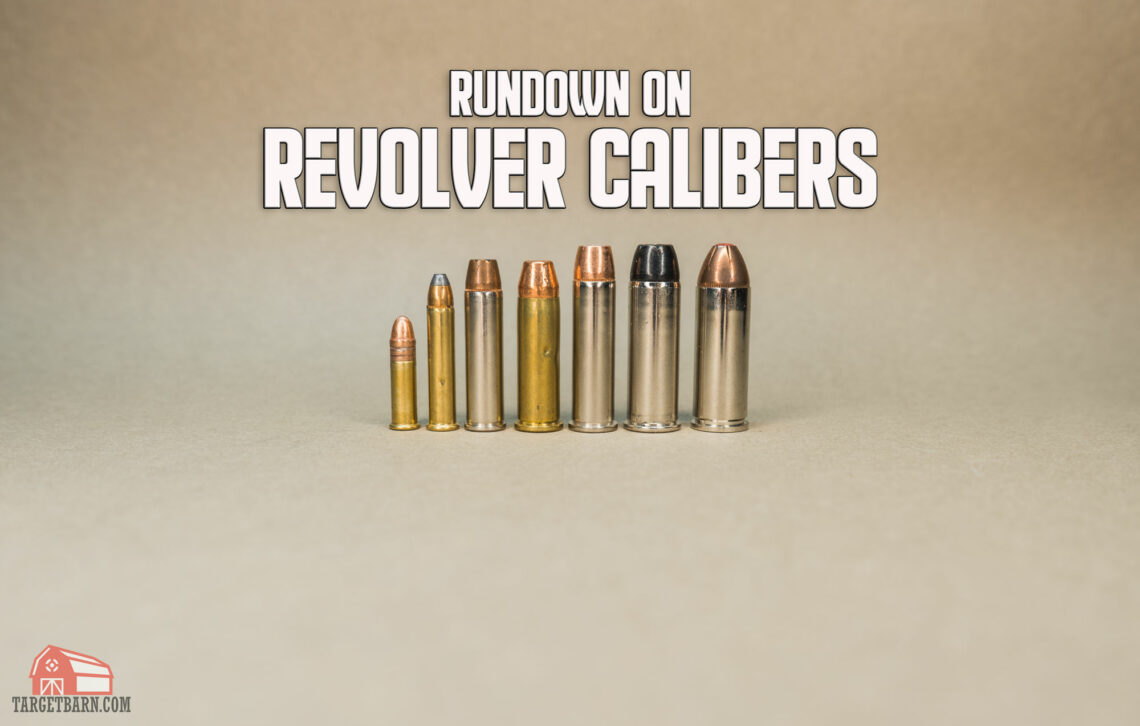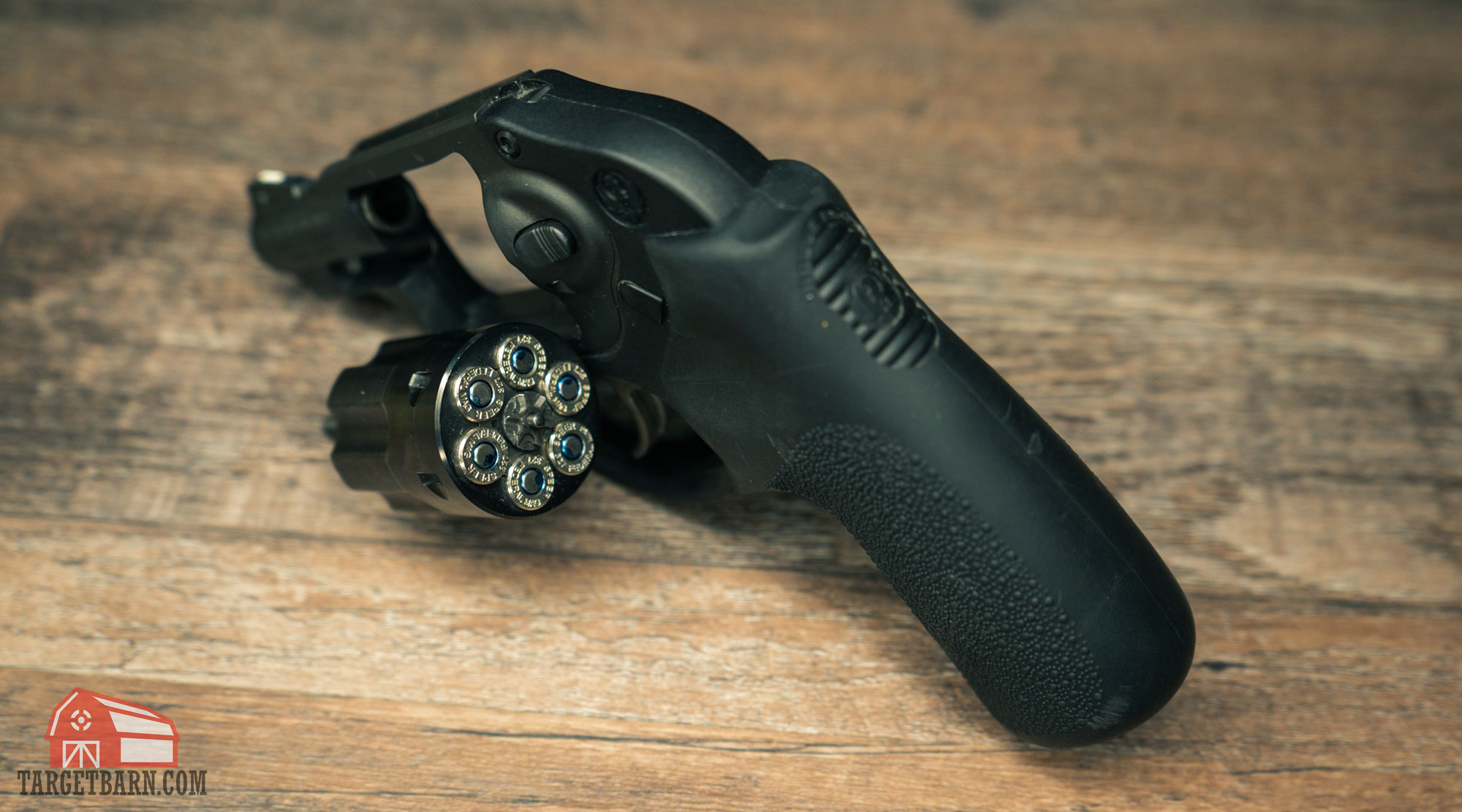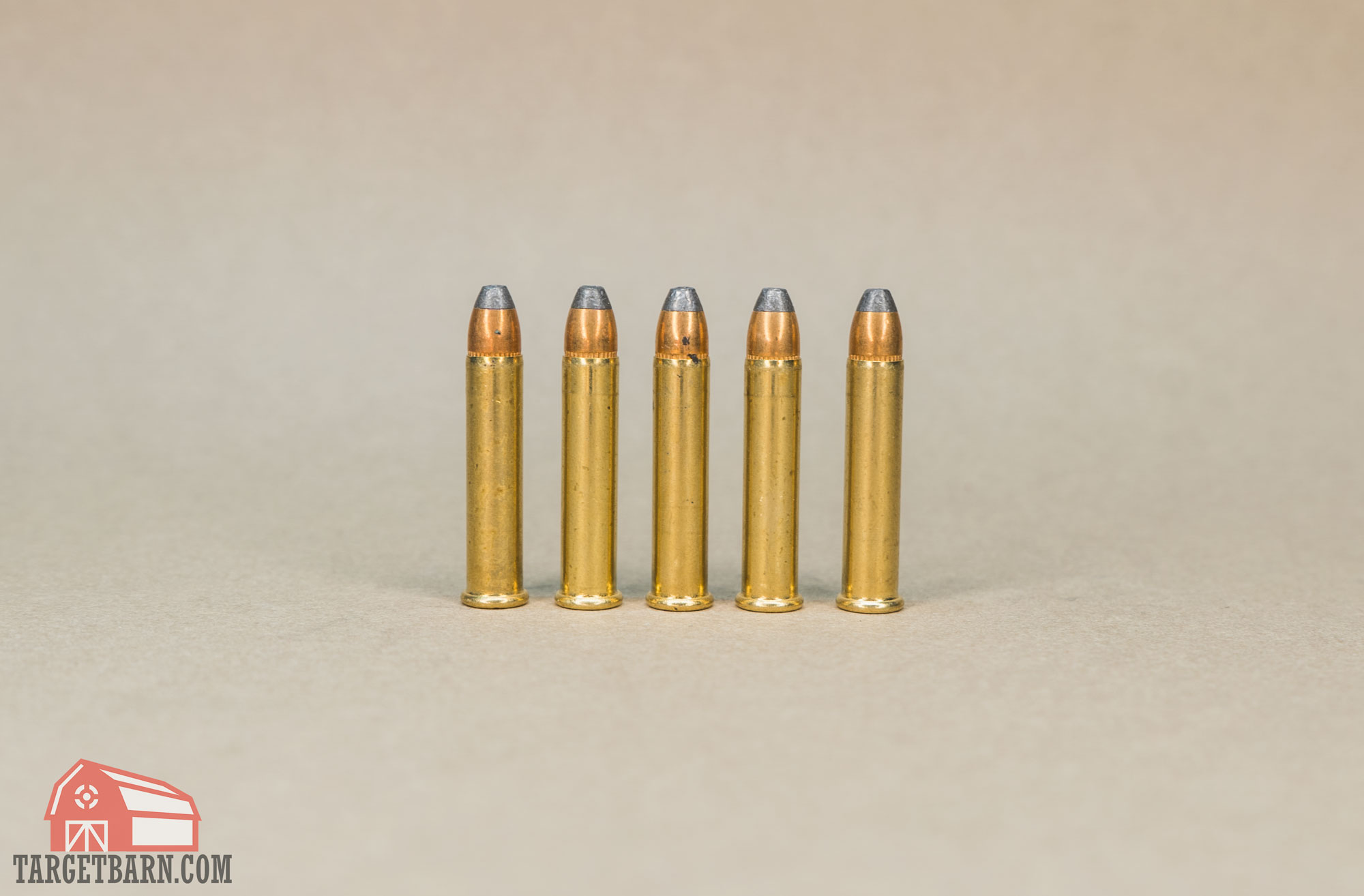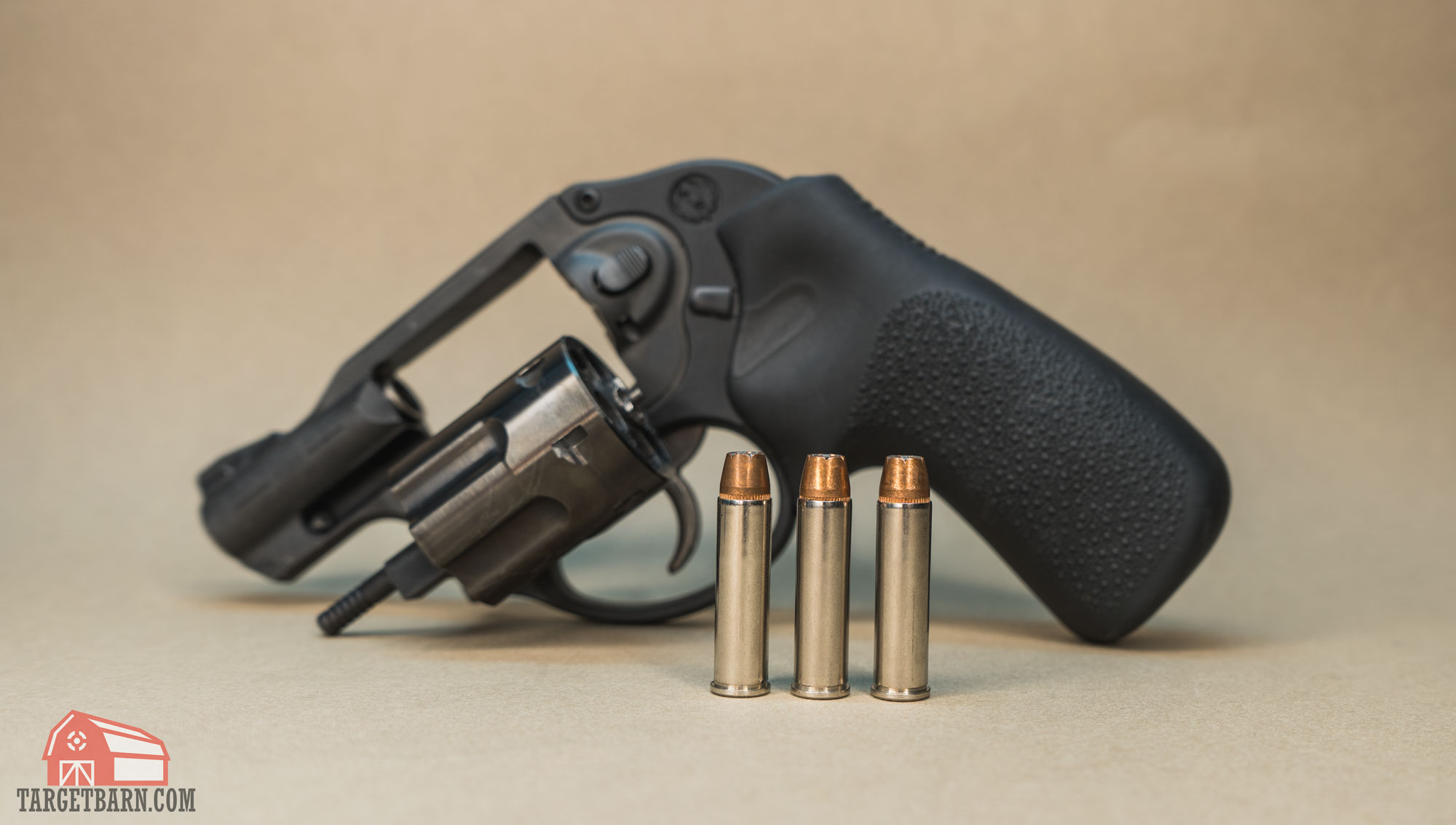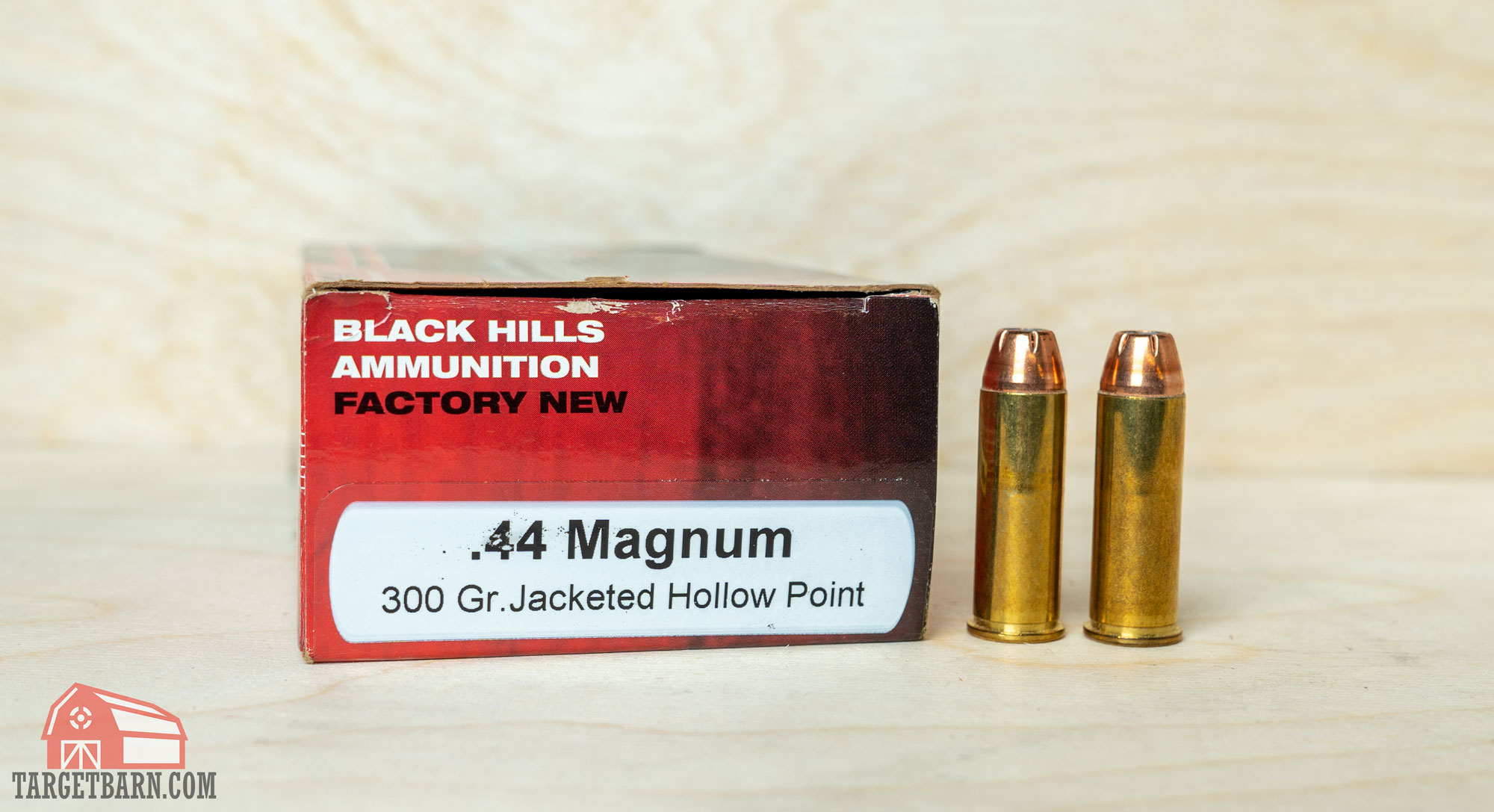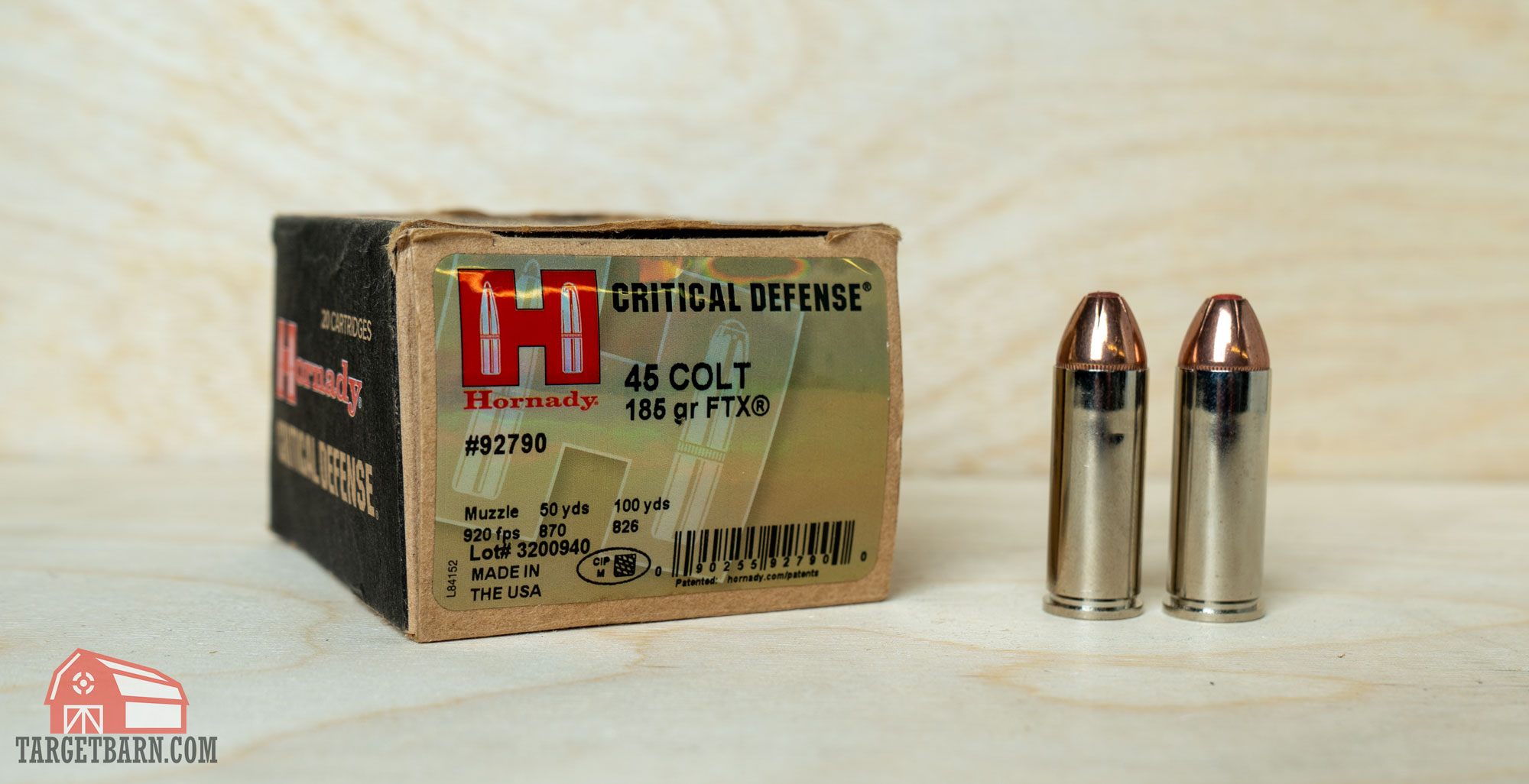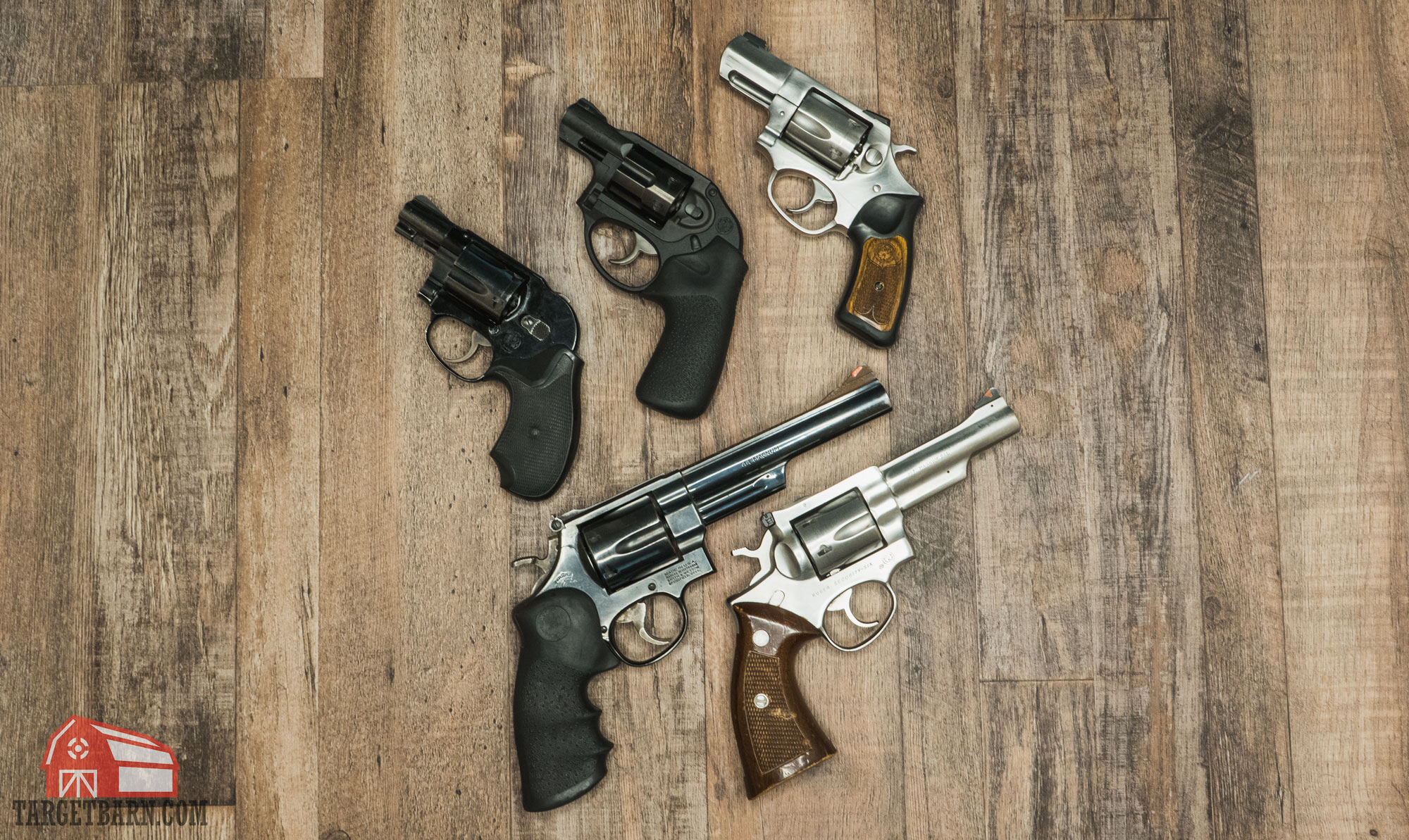There’s a reason revolvers are still a popular choice among shooters — compared to semi-auto pistols, they’re relatively easy to use and reliable. While semi-auto pistols have the advantage of a larger capacity magazines, shooting a revolver can be a nostalgic experience for many.
Whether you want to shoot a revolver for fun or carry one for self defense, you should know about the different revolver calibers. Today we’ll take a look at some of the most popular revolver calibers and what they’re good for.
Revolver Calibers List
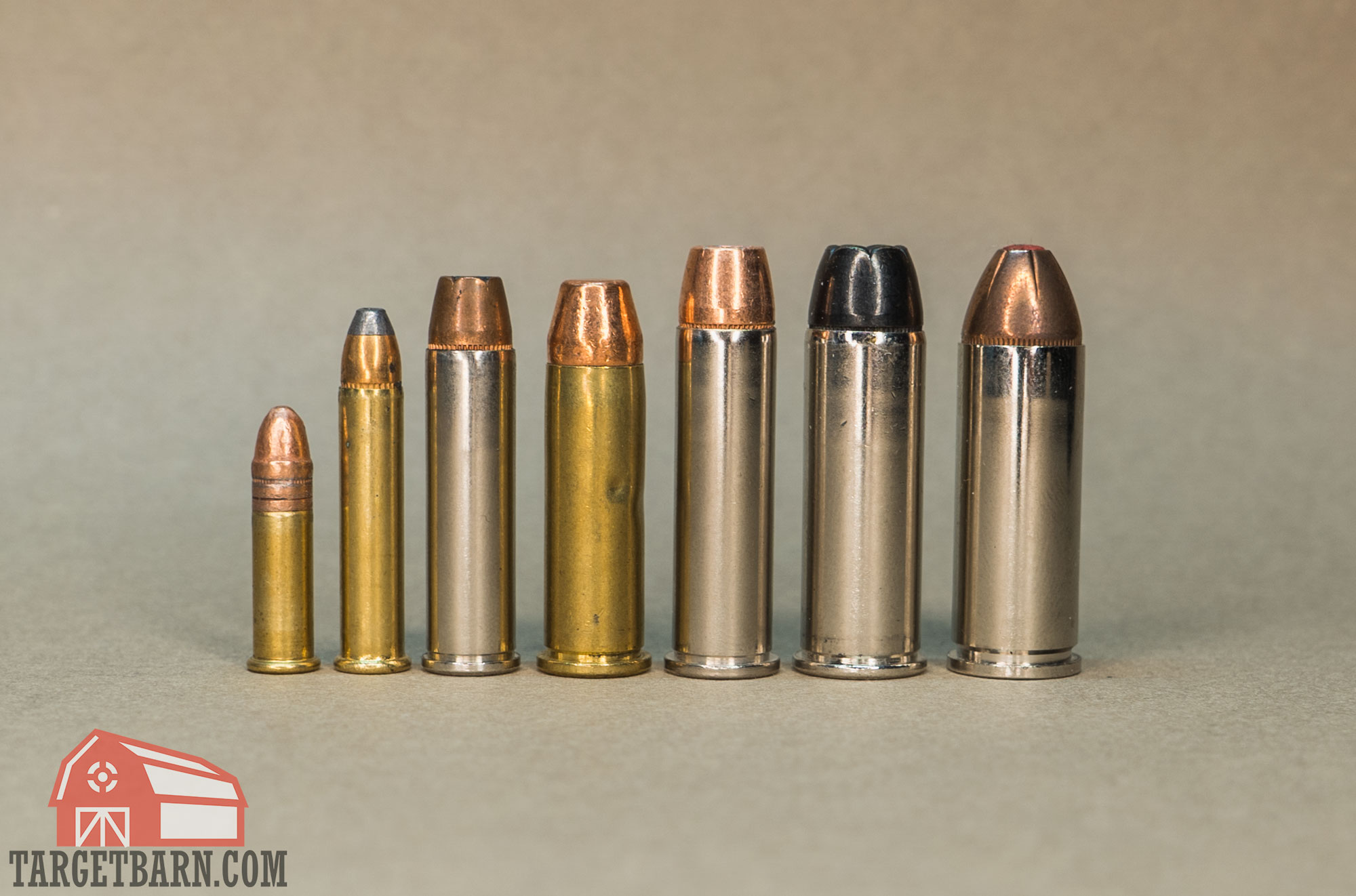
If you were to go to a gunshop and ask to see a revolver, the worker behind the counter would most likely show you a .38 Special or .357 Magnum. While those are two of the most popular modern day revolver calibers, there is an expansive list of revolver cartridges that includes everything from the popular .22LR to the more obscure 7.62x38mmR.
There are many different revolver calibers. Most revolver cartridges have a rimmed design. The rim allows for the correct headspace and also makes allows the spent cartridges to be ejected from the cylinder easily.
Revolver calibers include:
- .22LR
- .22 WMR
- .32 Short
- .32 Long
- .32 H&R Magnum
- .327 Federal Magnum
- .38 Special
- .38 S&W
- .357 Magnum
- .38 Short Colt
- .38 Long Colt
- .38-40 Winchester
- .44-40 Winchester
- .41 Remington Magnum
- .44 Special
- .44 Magnum
- .45 Colt
- .454 Casull
- .45 Schofield
- .460 S&W Magnum
- .500 S&W Mag
- .500 S&W Special
- .500 Linebaugh
- 7.62x38mmR
You will also find revolvers chambered in calibers that use a rimless design, but these are typically rounds initially chambered for a semi-auto pistol. When used in a revolver, the rimless rounds need moon clips to help with the headspacing and extraction. For example, Ruger makes a GP100 revolver that is chambered for 10mm ammo, a rimless cartridge most often used in semi-autos.
Choosing A Revolver Caliber
There are some revolver calibers that you will come across more often than others, especially when looking for a revolver to carry for self defense. For example, the .38 Special is one of the most popular revolver calibers, with most revolver manufacturers offering a gun in the caliber.
| Cartridge | Common Bullet Weights (grains) | Muzzle Velocity (fps) |
|---|---|---|
| .22 LR | 32, 36, 37, 40 | 810-1160 |
| .22 WMR | 30, 40, 45 | 1100-1430 |
| .32 Long | 98, 100 | 650-790 |
| .32 H&R Magnum | 80, 85 | 830-1070 |
| .327 Federal Magnum | 85, 100 | 1110-1370 |
| .38 Special | 90, 110, 125, 129, 130, 135, 148, 158 | 710-1110 |
| .44 Special | 165, 200 | 870-1210 |
| .357 Magnum | 100, 110, 125, 130, 135, 140, 158 | 1000-1650 |
| .44 Magnum | 165, 200, 225, 240 | 920-1450 |
| .45 Colt | 200, 225 | 680-1230 |
Now, let’s take a closer look at some of the most common revolver calibers you’ll find for self defense.
.22LR
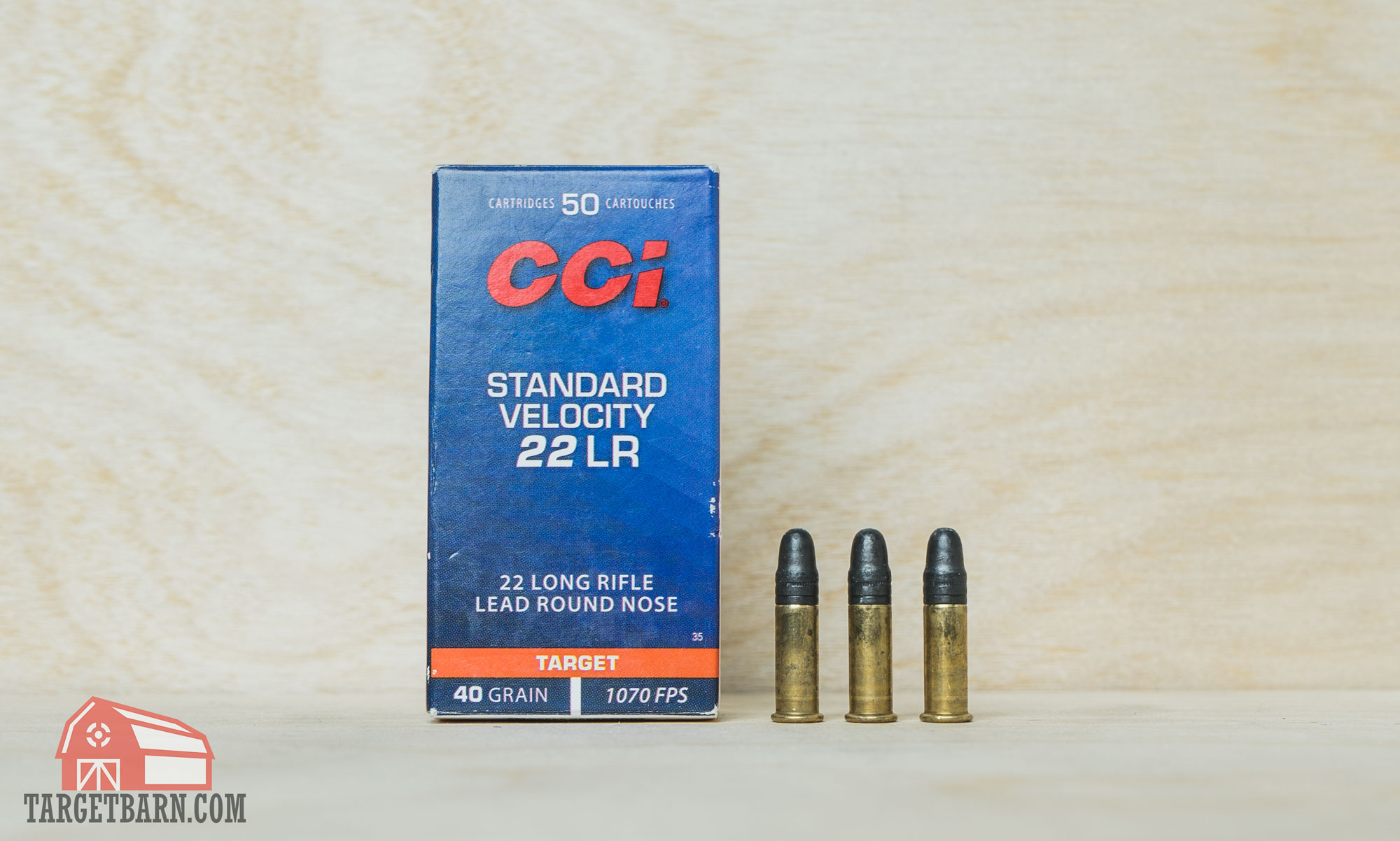
The .22 Long Rifle, or .22LR, is a rimfire round and one of the most popular calibers in the world. The .22LR isn’t a cartridge just for revolvers — there are many types of rifles and semi-auto pistols chambered in .22LR as well.
The .22LR is a relatively small round, with a bullet diameter of .223”. Shooters debate the utility of the .22LR for self defense due to its slower velocities compared to larger rounds. Out of a pistol or revolver, the .22LR has slower muzzle velocities, typically around or below 1000 feet per second (fps). This means the round is not moving fast enough to create adequate penetration and expansion.
However, if you’re just shooting for fun or competition, a .22LR wheel gun is a blast. A revolver like the Smith & Wesson Model 617 with a 6” barrel is enjoyable to shoot and gives you little recoil. One of the reasons the round is so popular is because there is plenty of cheap .22LR ammo for sale, meaning you get more bang for your buck.
.22 WMR
Another rimfire revolver round is the .22 WMR, also known as the .22 Winchester Magnum Rimfire, or .22 Magnum. The .22 WMR has a larger case than the .22 LR and a slightly wider bullet diameter at .2285”. Most loadings use 25 to 50 grain bullets with velocities reaching over 1100 fps out of snub nose revolvers.
Many shooters use the round for small game hunting out of rifles as the rounds reach higher velocities out of a longer barrel. As a self defense round, the .22 WMR isn’t ideal. With the current self defense rounds available, you will typically either have good penetration and no expansion, or okay penetration with good expansion.
The .32 Revolver Calibers
If you were to ask what the best snub nose caliber is, many might say the .38 Special. However, the family of .32 cartridges may actually be the better performers out of snub nose revolvers. The four .32 cartridges we are talking about are: .32 Short, .32 Long, .32 H&R Magnum, and .327 Magnum.
.32 Short
Also known as .32 S&W Short or .32 S&W, the .32 Short originated back in the black powder cartridge days as a round for small revolvers. Today it is considered an underpowered round, with velocities around 500 to 700 fps.
.32 Long
Less than 20 years after the introduction of the .32 Short, the .32 Long was created by slightly lengthening the case of the .32 Short. Also known as the .32 S&W Long and .32 Colt New Police, the round was used for the first Smith & Wesson hand ejector model revolvers. Colt also made revolvers for the cartridge.
Today the round is popular in the international competitive bullseye community due to its accuracy. Some small game hunters also make use of it. While it is more powerful than the .32 Short, it still shows low velocities ranging from 600 to 800 fps.
32 H&R Magnum
As the .32 Long’s popularity died out, revolver manufacturer Harrington and Richardson along with Federal brought a new iteration of the round to life in 1984: the .32 H&R Magnum. The round is based off of the .32 Long, but with a longer case and capable of higher velocities, often compared to standard pressure .38 Special. While small-frame .38 Special and .357 Magnum revolvers could only hold 5 rounds, the .32 Magnum could hold six.
.327 Federal Magnum
In 2008, Ruger and Federal joined forces to introduce yet another .32, this time the .327 Federal Magnum. The companies lengthened the case again, allowing for even better ballistics out of a snub nose revolver, with velocities reaching over 1200 fps. While many companies have offered revolvers chambered in .327 Federal Magnum, Ruger is the only company that currently produces .32 caliber revolvers.
Revolvers chambered in .327 Magnum can also fire .32 Short, .32 Long, and .32 H&R Magnum, making them a versatile option, especially in times of ammo shortages when some .32 rounds may be easier to find than otehrs. They can also be more enjoyable to shoot than .38 Special snub nose revolvers and give an extra round in the cylinder than .38 Special snub guns.
.38 Special
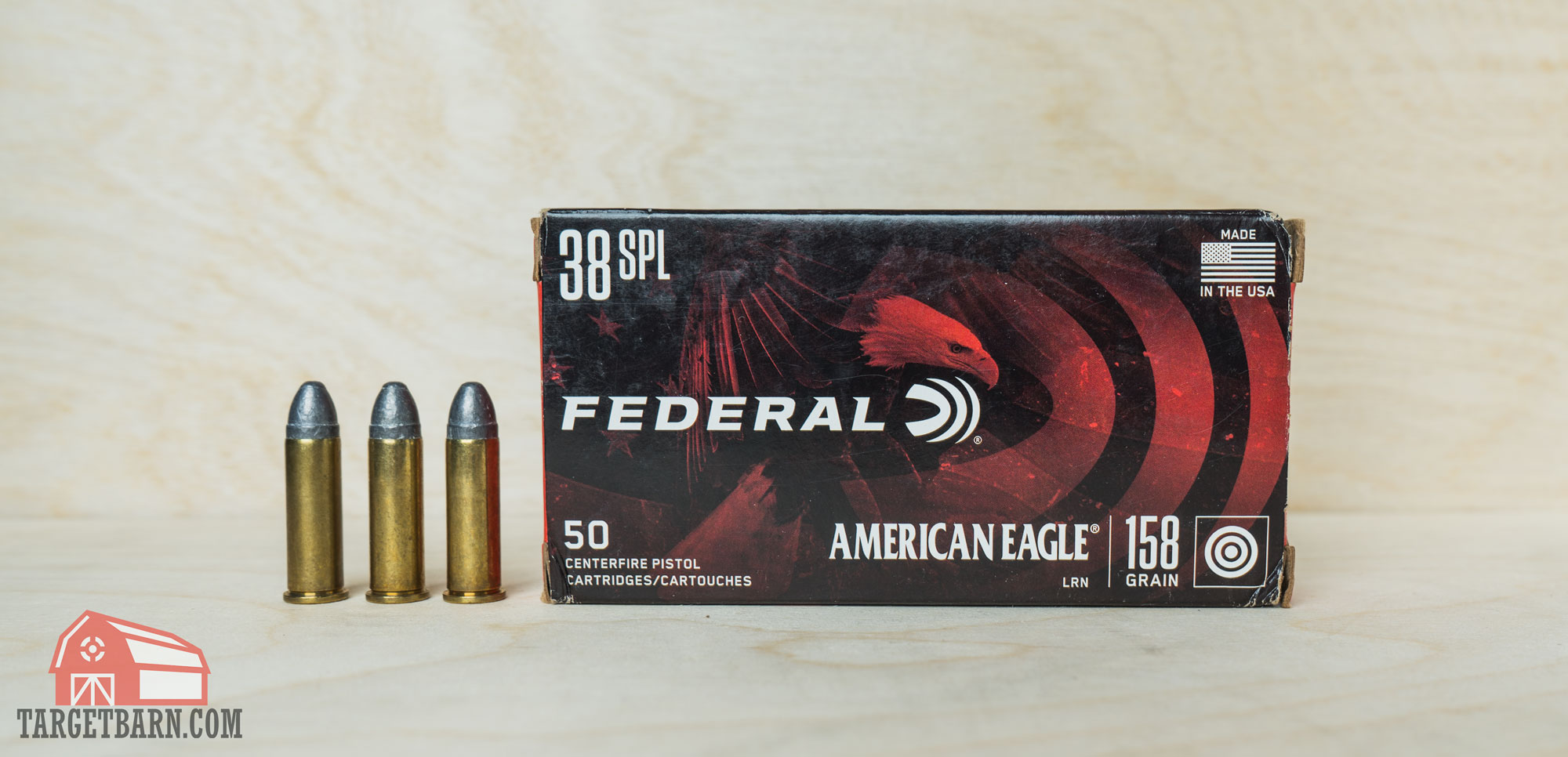
Probably the most popular of the revolver calibers is the .38 Special. Smith & Wesson developed the round in 1898 as an improvement to the .38 Long Colt. Not to be confused with .38 S&W, the .38 Special’s bullet actually has a diameter of .357″.
Finding .38 Special is easy — it is readily available with a wide variety of loads to choose from. Every major revolver manufacturer has a revolver chambered for the .38 Special.
For self-defense, the .38 Special might not be the most powerful round, but it certainly has a use-case when using the right rounds. Ammo manufacturers like Hornady, Federal, and Speer offer .38 Special self defense loads with varying degrees of ballistic performance.
One issue with .38 Special ammo is that, when fired out of snub nose revolvers, it often doesn’t gain enough velocity for the bullets to adequately expand upon penetrating a target. This is the issue we found in our Hornady Critical Defense .38 Special +P 110gr. FTX Review. That’s why, when you shop for .38 Special ammo, it’s important to select a quality round that has a track record of good performance.
.44 Special
Smith & Wesson designed the .44 Special as an updated, smokeless powder version of the .44 Russian. After Smith & Wesson’s success with the first Hand Ejector Model revolvers chambered in .32 and .38 cal, the company decided to try the same design in a .44 cal-frame with its N-frame revolvers.
In the 1920’s, a group of gun legends, including Charles Allan “Skeeter” Skelton and Elmer Keith, joined forces to develop the .44 Special round. This group, known as The .44 Associates, exchanged newsletters about handloading the round, including designing bullet molds with better ballistic performance. One of Keith’s creations – a 250-255 gr. Semi-wadcutter bullet is still being manufactured today.
Today, the .44 Special’s popularity has waned. Few manufacturers are producing guns chambered in the caliber, and only a couple ammo manufacturers are loading it. The main issue with many of the .44 Special loads is that they don’t adequately and reliably expand. It’s still a beloved caliber among a niche group of enthusiasts, but probably not the best choice if you’re looking for an everyday carry revolver.
.357 Magnum
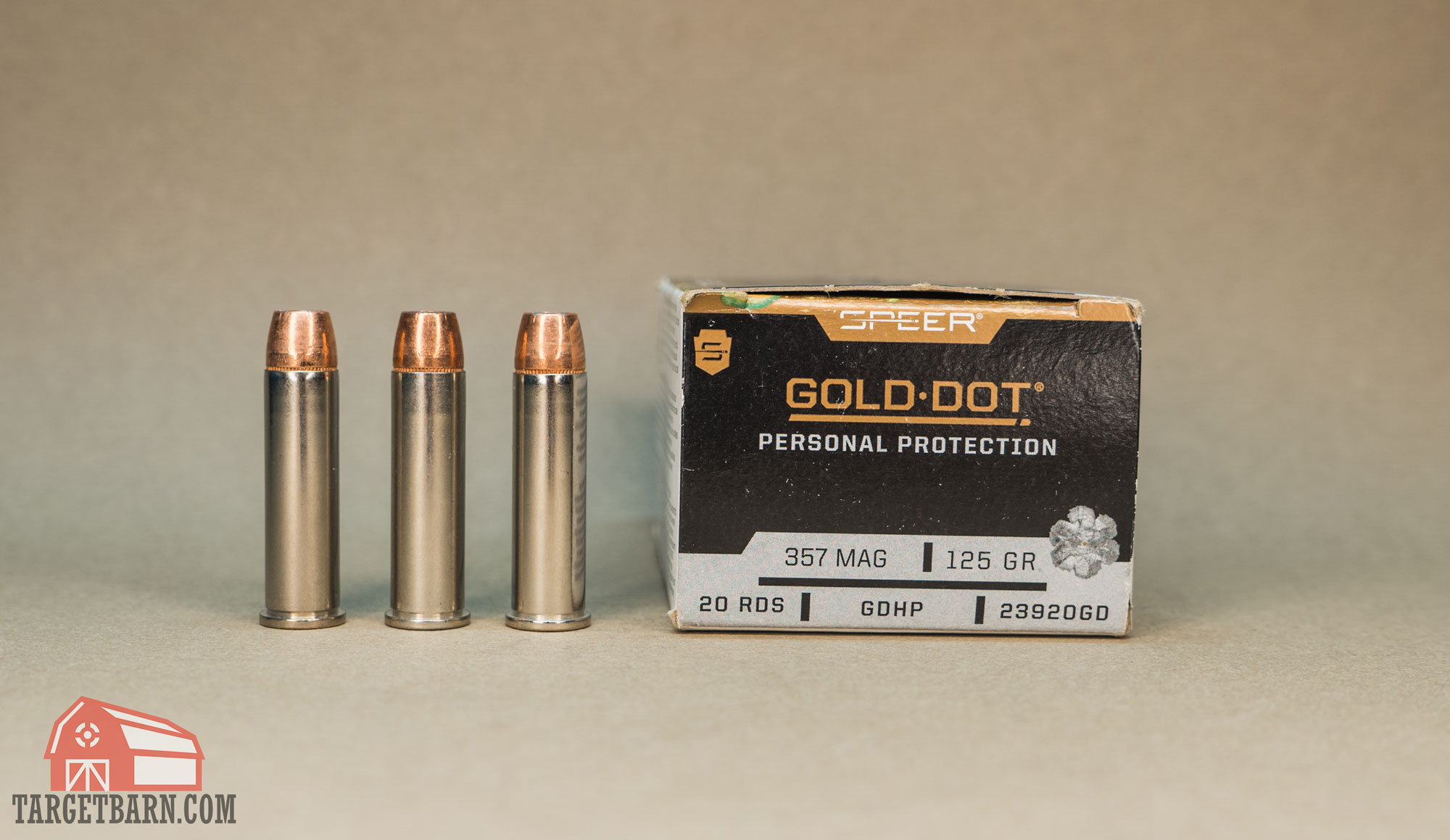
Smith & Wesson produced the .357 Magnum as a hotter version of the .38 Special. Both the .357 Magnum and the .38 Special have the same bullet diameter – .357”. They also have the same neck diameter and base diameter.
Where they differ is in length, case capacity, and max pressure. The .357 Magnum has a longer case and overall length, and also packs a lot more punch than the .38 Special. Due to sharing a bullet and base diameter, some revolvers can actually shoot both rounds. If a revolver is chambered for the larger .357 Magnum, it can also shoot .38 Special. However, guns chambered solely for .38 Special can not shoot .357 Magnum. Many shooters choose to carry a .357 Magnum revolver for this reason. They can practice with the easier shooting, more affordable .38 Special, but load it with powerful .357 Magnum ammo when carrying for self defense.
.44 Magnum
The .44 Magnum is an iconic revolver round. Dirty Harry’s gun, the Smith & Wesson Model 29 famously shoots the round. It was partly Elmer Keith’s experimentation with the .44 Special that created the .44 Remington Magnum. The .44 Magnum is more powerful than it’s little brother,
Both the .44 Magnum and its parent cartridge, the .44 Special, aren’t actually a .44 caliber. Both rounds have a bullet diameter of .429”. The .44 designation comes from early measurements when heeled bullets were still being used.
While not the most powerful of the revolver calibers available, the .44 Magnum still packs a heavy punch. Firing a heavy bullet with velocities often reaching over 1200 fps, many shooters use the round as a defense against wild animals. For example, AmmoLand has found 12 successful cases of shooters using a .44 Mag in defense against a bear.
.45 Colt
Colt and Union Metallic Cartridge Company developed the .45 Colt, also known as the .45 Long Colt, in 1871 for the U.S. Army as a replacement to the .50 caliber single shot pistol and other cap-and-ball revolvers in use at the time.
The .45 Colt round is popular among Cowboy Action Shooters and even as a handgun hunting cartridge for deer, bear, and hogs.
The round has remained popular thanks to revolvers like the Taurus Judge and the Smith & Wesson Governor. These revolvers can shoot both the .45 Colt cartridge and a .410 shotshell. While not the most practical gun for self defense, the novelty of a gun that can shoot a centerfire cartridge as well as a shotshell attracts many gun lovers.
Revolver Calibers – Final Thoughts
While the cartridges we’ve covered are the more popular revolver calibers you’ll see, that doesn’t mean they’re the only ones people are carrying. At a gun range I worked at, I once witnessed a guy shoot his handgun carry permit test using his Smith & Wesson Model .500 revolver just for the fun of it. While it’s a bit overkill (and expensive) for a carry permit test, it might not be if you’re hiking in the backcountry where you could encounter large game.
Ultimately, whatever revolver caliber you choose, select reliable ammo that works in your gun and make sure you know how to safely use it!

